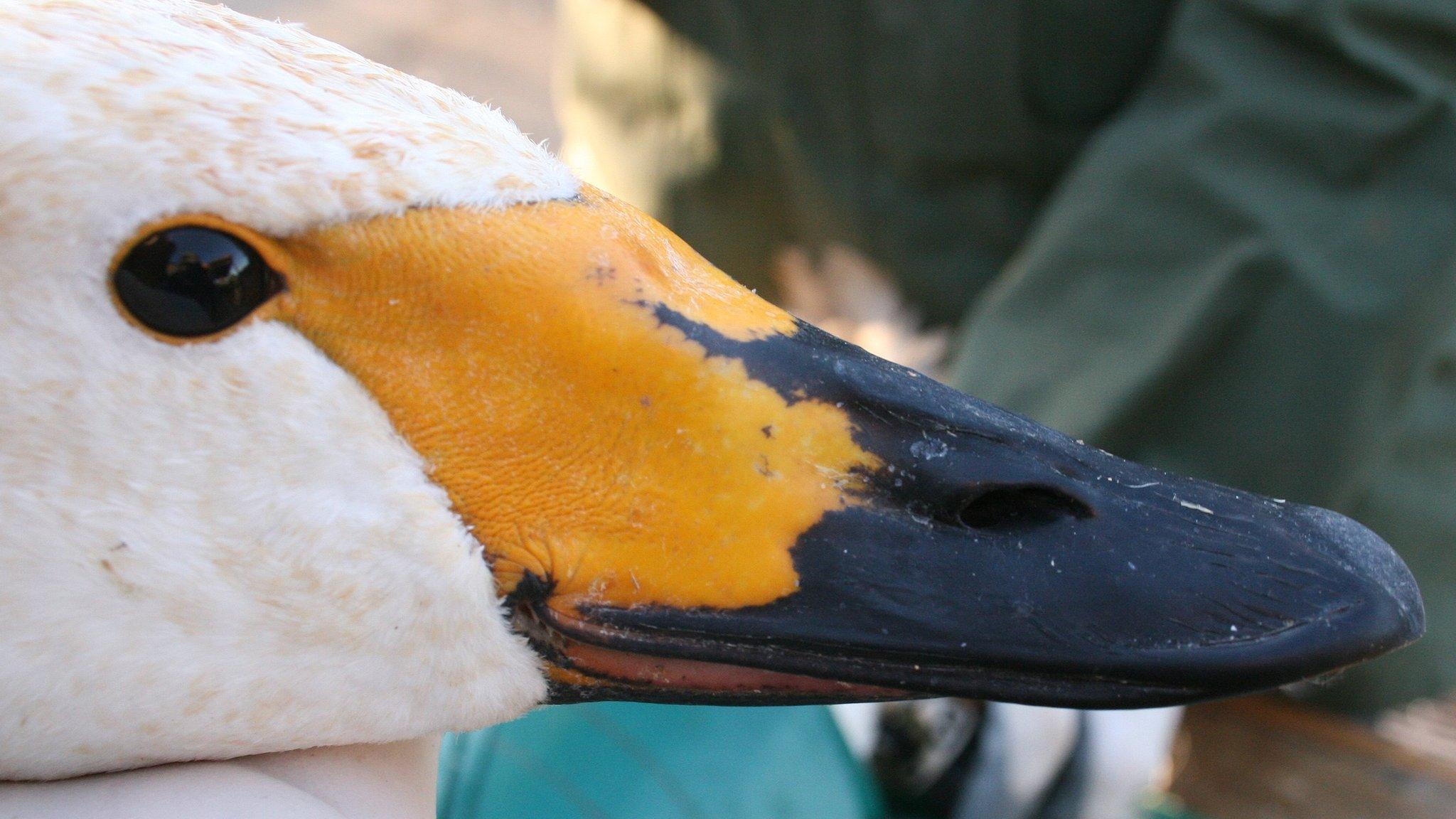Rare Bewick's swan numbers show 'alarming crash'
- Published
.jpg)
The Wildfowl and Wetlands Trust says Bewick's swans that winter in Europe have suffered an 'alarming crash' in numbers
The UK's smallest and rarest swan has suffered an "alarming crash in numbers", the Wildfowl and Wetlands Trust has said.
The Slimbridge-based charity said more than a third of Bewick's swans have disappeared since 1995, when the total population peaked at 29,000.
The latest figures, external show that, by 2010, there were just 18,000 left.
Scientists believe illegal hunting, power lines and lead poisoning have contributed to the drop in numbers.
The charity said it feared the next census, due this winter, would reveal a "further, more worrying decline" in population.
In some winters, the Ouse Washes spanning Norfolk and Cambridgeshire receives 33% of the northwest European Bewick's swan population.
Head of UK waterbird conservation Eileen Rees said swans were not producing enough offspring to replace the ones that have died over the year.
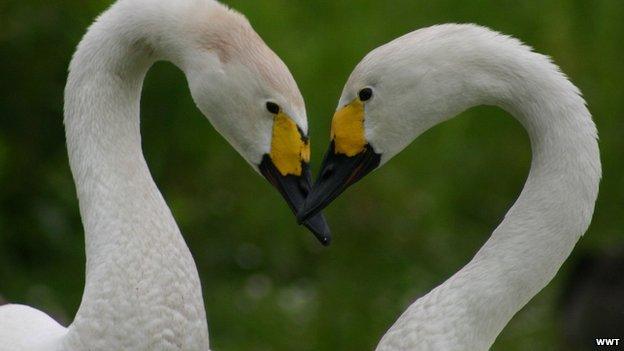
WWT is working on an action plan which hopes to stabilise the numbers of Berwick's swans
"We have two possible solutions - to find out and address what's hampering breeding, and to reduce the number of preventable deaths along their migration route," she added.
"We have a plan in place to do both, and much work is underway already, but we need to do it all if we're to change the fortune of our wildest and most beautiful swan."
The Wildfowl and Wetlands Trust started studying Bewick's swans 50 years ago and it has now recorded in detail the lives of nearly 10,000 individual swans.
The charity is currently working on the Bewick's Swan International Action Plan, external, which aims to stabilise the population.
Bewick's swans breed in the cold Arctic tundra of northern Russia.
The western population winters in northern Europe, including the British Isles, while the eastern population heads towards China and Japan for the winter season.
Bewick's are a subspecies of the tundra swan and the smallest swan in Europe.
- Published8 June 2014
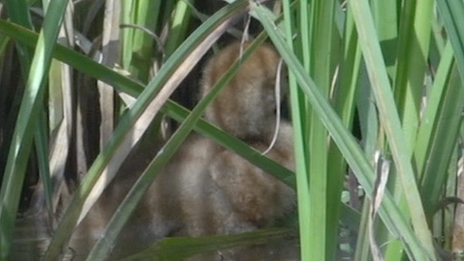
- Published19 May 2014

- Published1 May 2014
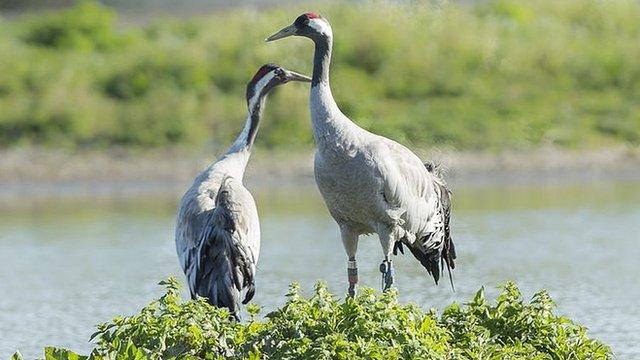
- Published28 January 2014
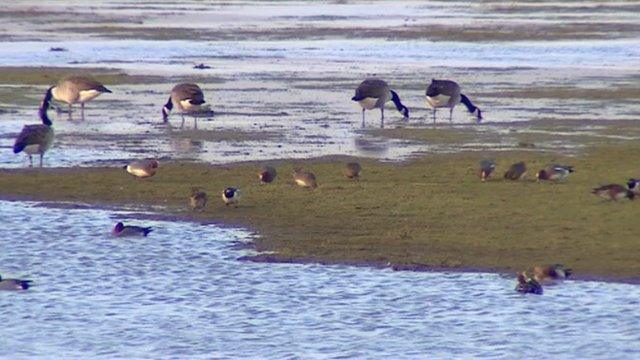
- Published31 May 2012
